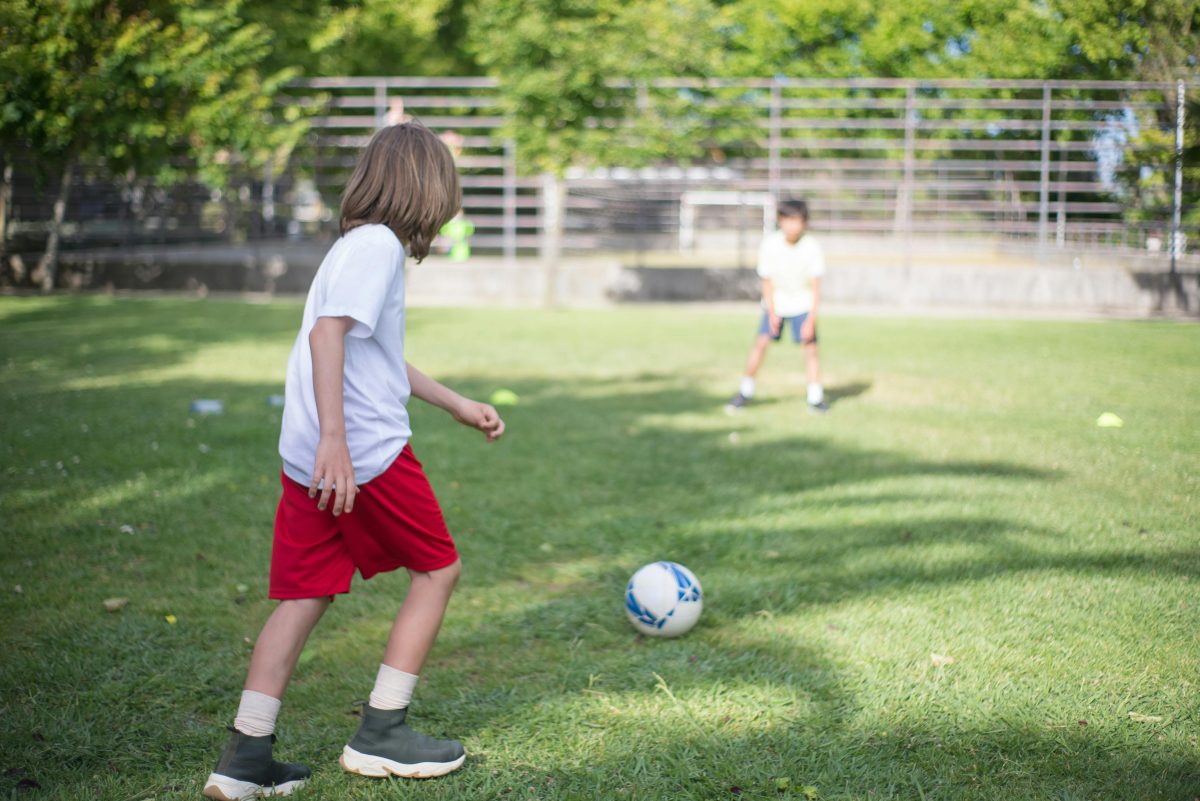Extracurricular Overload: An Introduction

Extracurricular activities are essential to a child’s overall development. These can include anything from debate clubs and volunteer work to sports and music. They cultivate abilities including leadership, time management, and teamwork. But striking a careful balance is necessary. There is a thin and frequently hazy boundary between stimulating involvement and over overload. The purpose of this article is to examine the balance between extracurricular activities and responsibilities, helping parents and kids to navigate the confusing world of after-school programs. Families may make sure these activities enrich rather than exhaust, providing doors to a well-rounded and enjoyable educational experience, by learning techniques to maintain a healthy balance and recognizing the signs of overload.
Identifying the Indices of Over-Devotion

Recognizing the point at which extracurricular activities become burdensome is critical. Overcommitment presents itself in a number of ways in a young person’s life, all of which indicate that their schedule needs to be reviewed and adjusted.
Physical Signs
Sleep deprivation and fatigue are obvious signs that something is awry.
- Children’s bodies are feeling too much stress when they are always exhausted, have trouble waking up, or have changes in their feeding patterns.
Signs of Emotion
- Children who are overcommitted may experience increased stress and worry, which may cause them to lose interest in activities they used to enjoy.
- This emotional cost is a serious warning indication that their obligations are starting to become too much for them to bear.
Instructional Indications
- Falling grades, missing assignments, and inattentiveness in class can all be indicators of an excessive amount of extracurricular activities.
- When a student’s academic performance declines, it’s evident that their timetable needs to be adjusted to include time for both study and relaxation.
Social Signals
- Conflicts within the family and social isolation are frequent social repercussions of overcommitment.
- Lack of free time reduces opportunities for family bonding and informal social encounters, which can exacerbate tension in the home and cause feelings of loneliness.
Early detection of these symptoms enables prompt treatments, preventing extracurricular activities from becoming a source of stress and tiredness but rather of growth and enjoyment. Families can assist their children in leading well-rounded, balanced lives by closely monitoring these markers.
The Effects of Overindulgent After-School Activities

The pursuit of a comprehensive education frequently results in an overcrowded calendar of extracurricular activities. Although these activities are quite beneficial, too much of them might negatively impact a young person’s wellbeing.
Regarding Mental Wellness
- Burnout, stress, and the possibility of depression loom large when kids have too many things on their plates.
- Their mental resilience may be damaged by the ongoing pressure to perform and live up to expectations, which can leave them feeling nervous and overwhelmed.
Concerning Physical Well-Being
- Excessive involvement in extracurricular activities can lead to major physical consequences such as chronic weariness and an increased risk of injury.
- It is important to take seriously the possibility that the unrelenting pace may weaken their immune systems, leaving them more vulnerable to disease and less able to heal from wounds.
Regarding Academic Achievement
- It is also alarming how this affects academic achievement. Distraction and poorer academic performance become unavoidable as students attempt to balance their obligations.
- These hobbies might take up a lot of time and energy, which makes it difficult for them to concentrate on their academics. This can impede learning and cause academic stress.
Regarding Social Life
- The impact on social life is arguably one of the effects that is most ignored. Cutbacks on time spent with friends, family, and personal development can result in feelings of loneliness and being left out of important developmental events.
- It is impossible to overestimate the significance of downtime for unwinding and informal social connections in terms of personal growth.
Identifying the symptoms of over commitment is the first step in reestablishing equilibrium. To enable kids to flourish in all aspect of their lives, extracurricular activities must be balanced such that they enhance rather than deplete. Families may successfully negotiate the complicated world of after-school obligations by encouraging open communication and establishing reasonable expectations, ensuring that these extracurricular programs fulfill their stated goal of improving the educational experience.
Visit the Health Direct website or refer to the resources at for additional information on stress management and achieving a healthy balance in children’s schedules.Visit the Beyond Blue website for mental health advice.
The Function of Coaches, Teachers, and Parents

Identifying the Sources of the Pressure to Excel
Parents, teachers, and coaches are essential in recognizing the stresses that young people encounter. Peer comparison, personal aspirations, and society expectations are common sources of these pressures. The first step in addressing and lessening their effects is identifying these sources.
Promoting Honest Conversation About Objectives, Passions, and Difficulties
Clear and honest communication is essential. It creates an atmosphere in which kids feel comfortable talking about their goals, passions, and the stresses in their lives. Understanding their motivations and the best ways to assist them on their journey depend on this conversation.
Giving Advice on Choosing the Right Activities
Not every activity is equally valuable to every youngster. Helping them select activities that fit their interests and objectives is crucial. It makes sure they’re not just adding to their stress levels, but that their time is being spent on interesting and enjoyable activities.
Aiding the Child in Reaching Balance and Endorsing Their Decisions
Support continues when an activity is chosen. It includes honoring their choices, promoting a sensible workload balance, and making sure they have enough time for relaxation and recreation. This equilibrium is essential to their general growth and well-being.
Parents, educators, and coaches can have a big impact on a child’s capacity to manage extracurricular commitments by actively identifying pressures, promoting open communication, helping with activity selection, and supporting well-balanced decisions. The use of a collaborative approach is crucial in cultivating a supportive environment that places a premium on the child’s welfare and individual development.
Achieving Balance: A Practical Guide

Going Through a Self-Evaluation
- Reaching balance begins with realizing one’s interests and boundaries. It requires a honest self-evaluation to determine what is actually important.
- This self-examination aids in determining what is necessary and what may be reduced, guaranteeing that time and effort are used effectively.
Having Reasonable Objectives
- Establishing goals is essential. It involves developing a vision for both the near and far future.
- While long-term goals offer a more comprehensive view and influence overall development, short-term goals give everyday actions a distinct direction.
- This two-pronged strategy guarantees that endeavors are in line with individual goals, giving every step meaning.
Seek Assistance
- Nobody can attain equilibrium by himself. It is imperative to seek assistance from mentors, family, and school resources.
- These networks lessen the intimidating nature of the path towards balance by offering direction, support, and useful assistance.
- They serve as a sounding board for concepts and a source of inspiration when things are hard.
Modifying Devotions
- It’s an art to know when and how to cut back. It takes guts to make tough choices and a sharp understanding of one’s limitations.
- Making adjustments to commitments may include cutting back on participation or giving up on some activities in order to avoid burnout.
- Maintaining wellbeing and ensuring that interactions are both pleasurable and fulfilling need this calculated retreat.
People can confidently handle the challenges of extracurricular activities by adhering to these doable guidelines. The cornerstones of attaining a balanced and meaningful life are self-evaluation, realistic goal-setting, seeking assistance, and modifying commitments. This well-rounded strategy not only fosters personal growth but also makes sure that extracurricular activities enrich academic and personal lives rather than conflict with them.
In Conclusion
A satisfying extracurricular experience requires balance. It fosters in young learners resilience and delight. A balanced mix of learning and play supports kids’ mental, physical, and intellectual health and points them in the direction of a fulfilling life. Let’s teach our children to value balance so they can grow and be happy in their endeavors.
Balancing Extracurricular Activities: How Much Is Too Much? FAQs
Yes, limited involvement in extracurricular activities can restrict opportunities for social development, skill acquisition, and exploring interests. It’s important to find a balance that allows for personal growth without leading to overcommitment. Encouraging participation in at least one or two activities can provide these benefits without overwhelming their schedule.
Extracurricular activities promote the development of social skills, leadership qualities, and self-esteem. They offer opportunities for students to explore interests and talents outside of the academic curriculum. These activities also teach valuable life skills such as teamwork, time management, and perseverance.
Setting a structured schedule that includes time for homework, activities, and sufficient rest is crucial. Encourage prioritizing tasks and commitments based on importance and deadlines. It’s also helpful to have regular check-ins to reassess and adjust their schedule as needed to prevent overload.
Moderate involvement in extracurricular activities has been shown to positively impact academic performance by teaching time management, discipline, and motivation. However, excessive involvement can detract from study time and lead to stress, negatively affecting grades. Finding a balanced level of involvement is key to supporting academic success.
If your child is struggling to keep up with academic work, showing signs of stress, or no longer enjoying their activities, they may be overcommitted. It’s important to monitor their overall well-being and academic performance as indicators. Open communication about how they feel about their schedule can also provide insights into whether adjustments are needed.
Children should have at least 1-2 hours of unstructured free time daily to relax and engage in activities of their choosing. This downtime is essential for mental health, creativity, and personal development. It also provides a necessary balance to structured activities and academic demands.
Specializing in one activity allows for focused skill development and can lead to higher levels of achievement in that area. However, participating in multiple activities fosters a well-rounded skill set, resilience, and adaptability. The best choice depends on the child’s interests, goals, and capacity to manage multiple commitments without stress.
Signs of burnout include chronic fatigue, decreased interest in activities that were once enjoyable, and a decline in academic performance. Physical symptoms such as headaches or changes in sleep patterns can also indicate burnout. Recognizing these signs early can help in taking steps to reduce the load before it affects health and well-being.
Parents should provide support and guidance, helping their child make decisions about which activities to pursue based on their interests and capacity. It’s also important for parents to encourage balance and not push for excessive participation that could lead to stress or burnout. Being involved, without being overbearing, allows children to develop independence and self-regulation skills.
What strategies can schools use to help students balance extracurricular activities and academics?
Schools can offer time management workshops, provide a balanced schedule that avoids overloading students with activities, and encourage a culture that values academic achievement as well as extracurricular involvement. Advising services can help students make informed decisions about their commitments. Additionally, creating a supportive environment where students feel comfortable discussing their workload with teachers and counselors can aid in maintaining balance.

